Looking Past the Sales Pitch: Analyzing an Offshore Insurance-Linked Investment Scheme
If you’re an expat who has been abroad for any length of time, you’re no doubt familiar with the various insurance-linked investment schemes (or unit-linked life assurance plans) peddled relentlessly in the offshore markets. We’ve been analyzing these products for years and have written about their pitfalls. The products have evolved over time, however, and unfortunately expats continue to get caught up in their aggressive marketing.

For an update on what’s being pushed at expats, we recently looked at one insurance-linked investment scheme that touts an “award-winning” range of investment and insurance products, with the following benefits:
- Access to 90% of your premium from the start
- Opportunity to earn a loyalty bonus
- No initial sales charge—100% of each premium is invested
- No bid/offer spread
- Wide range of funds managed by investment specialists
- Potential for tax-free investing
- Free fund switching
- Choice of plan currency
- Ability to add to your plan at any time
- Life assurance with 101% death benefit
The scheme is even regulated in one of the major offshore financial centers to “provide an exceptionally high degree of regulation and security.”
That all sounds pretty impressive. With such a lineup of benefits, who wouldn’t be enticed? Still, things are not always as they seem. Let’s take a closer look at the supposed benefits of this product.
1. No Initial Sales Charge
Technically, it’s true that there is no initial sales charge. But there is something called an “establishment charge,” which is equal to 1.6% of the premium each year for a period of five years. In other words, 8% of your initial premium is deducted over a period of five years. The charge is taken quarterly from the underlying investments prior to stating their net asset values (NAVs), so clients rarely notice.
Each new investment or “premium” is subject to the same 8% charge. This charge covers the fee the product provider pays to the financial advisor. If you want to surrender your scheme early, then any unpaid establishment charges are brought forward as a surrender charge.
2. No Bid/Offer Spread
There is no bid/offer spread because there is now something called an “establishment charge.” The financial advisor or salesperson has to be paid somehow. Previously, this was more or less hidden in the bid/offer spreads. The establishment charge makes this cost more transparent.
3. Access to Your Capital
The scheme allows you to withdraw up to 90% of your premium/investment, subject to certain restrictions. It’s unclear why this is a benefit. If you invested in a stock or mutual fund, you could withdraw 100% of the value at any time. The scheme does not offer any special protection. If the underlying investment in the scheme falls below your initial investment, you are not going to be able to withdraw your initial premium/investment.
4. Additional Contributions
The scheme allows you to make additional contributions whenever you like. Again, it’s difficult to see why this is a benefit.
5. Tax-Free Investing
Advisors often sell these insurance-linked investment products based on their tax advantages. In many cases, however, non-American expats are not taxed on their offshore investments in the first place. For example, most countries do not tax nonresident citizens on assets held outside their home countries. Many expats also work in countries, particularly in Asia, that do not tax assets held offshore. If they did, these products would offer no protection. These products do not confer any real tax benefits, beyond what most expats naturally receive simply by working and holding their assets outside their home countries.
For Americans taxed on worldwide income and assets, offshore insurance wrappers are unlikely to qualify for U.S. tax-deferral benefits from the IRS. Worse, the investments they house will likely be considered passive foreign investment companies (PFICs). Unlike U.S.-incorporated mutual funds, where capital gains are deferred until realized and which are subject to preferential long-term capital gains rates, PFICs are subject to a particularly punitive taxation regime. Annualized tax rates on PFICs can total 50% or more.
Finally, despite the marketing, a tax treaty between the U.S. and an offshore jurisdiction such as Malta may not benefit an American who lives in a third country such as Thailand. Any U.S. citizen considering purchasing into a scheme based on the supposed advantages of a U.S. tax treaty should consult with a U.S. tax professional first.
6. Access to a Range of Investment Specialists
In this case, the scheme offers mirror funds linked to 200 external mutual funds from 35 different fund houses. A mirror fund is set up by the scheme provider and is designed to “mirror” the fund of an external manager. It does this by investing mirror fund assets net of fees in the external fund. Due to fees and other factors, the mirror fund will not necessarily track the performance of the external fund. The mirror funds can be accessed only through the scheme provider.
But how notable are the scheme’s investment options in reality? For comparison, consider that one global discount broker affords direct market access to thousands of stocks, options, futures, forex, bonds, ETFs, and CFDs in 100 markets across 24 countries.
7. Death Benefit
The scheme has a death benefit that pays 101% of the plan’s surrender value (after deduction of all sales-related establishment charges). This is like a bank offering you life insurance tied to the value of your deposits. The amount your beneficiaries receive on your death is the value of your deposits (not the death benefit and your deposits). There is virtually no insurance value here—it’s all self-funded. These products are designed as investments and meet only the barest minimum of requirements to be classified as an insurance product.
8. Fees
The scheme comes with several layers of fees:
- Administrative charge: 1.2%
- Establishment charge: 0.4% each quarter (1.6% per year) of the premium for five years
- Underlying fund fees: Up to 3.35% (with an average of 1.5% to 2%); some funds may include performance fees
To be fair, the sales brochure lays the fees out pretty clearly, particularly in comparison to earlier products. Essentially, each contribution/premium is subject to an 8% commission (although it is spread out over five years), which covers fees to the advisor/salesman. There is also an ongoing annual fee of between 2.7% and 3.2%. These fees are collected from the underlying funds prior to posting the fund NAVs, so they are rarely recognized by the investor.
Contrast that with a globally diversified portfolio that can be constructed with low-cost exchange-traded funds (ETFs) through a global discount broker for about 0.25% annually.
9. Security
According to the marketing material, the scheme’s location in one of the major offshore financial centers means it is protected by comprehensive legislation, which provides “an exceptionally high degree of regulation and security.” Tell that to LM Investment Management (LMIM) investors, who lost millions when the fund collapsed.
The fine print states that investors should be aware that specific investor protection and compensation schemes that may exist in relation to collective investments and deposit accounts are unlikely to apply in event of failure of such an investment held within insurance contracts.
Additionally, the company offering the scheme/product clearly states on its website that it does not provide advice or sell products direct to the customer, and for further information on services and products, the customer should contact their financial advisor. Of course, the financial advisor is not an employee of the firm offering the product. Nor is the advisor typically regulated by the offshore regulator that oversees the product provider.
The scheme provider is therefore not liable for any advice, selling, or misselling by an advisor/salesman to a client. This is why an advisor needs to be regulated in the jurisdiction in which the advice or selling is being provided.
The fact that the scheme itself is regulated in a major offshore jurisdiction affords little real protection or recourse for investors from the misselling and fraud that sometimes occurs in the offshore markets.
Consider Your Options
It’s possible that there was a time when these insurance-linked products were pretty much the only way for an expat to invest outside their home countries. Times have changed, however, with product innovation and the rise of global online discount brokers. The next time you are pitched one of these insurance-linked schemes, make sure you do your homework and consider your options.
This article is a revised and updated version of one that had appeared previously on www.crevelingandcreveling.com.
Additional Resources
Five Things to Consider Before Buying Offshore Investment Schemes
Expat Investment Advice: Structured Products—Buyer Beware
Five Questions Expats Should Ask Before Choosing an Offshore Custodian
American Expats: Don't Get Caught by U.S. Tax Rules on Foreign Investments
Investment-Linked Insurance Schemes a Trap for Unwary Investors (South China Morning Post)
When an Investment Fund Goes Bad (South China Morning Post)

